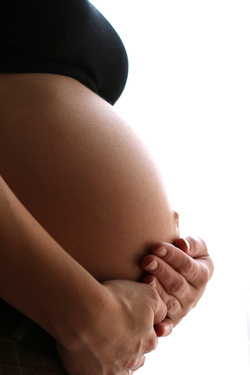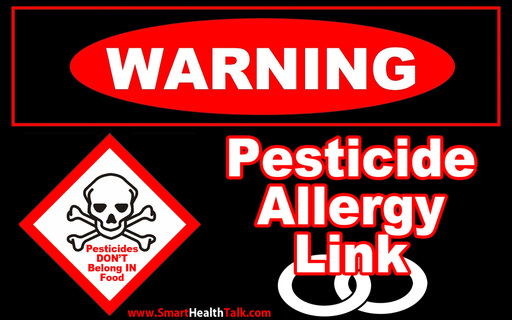|
|
|
What Are Birth Defects?

People define “birth defects” in different ways and recognize different types of birth defects.
last updated in 2004 http://www.healthandenvironment.org/birth_defects
How Serious are Birth Defects? Major birth defects are the leading cause of infant mortality in the United States. Birth defects that most often cause infant death include heart defects, respiratory defects, nervous system defects, and multiple abnormalities. Birth defects also are a major cause of miscarriage and fetal death. Nearly half of all pregnancies today result in the loss of the embryo or fetus, often very early in pregnancy. Many of these losses are due to a problem that would result in a birth defect. According to one estimate, it costs about $8 billion over a lifetime for children born each year in the U.S. with one or more of 18 of the most significant major birth defects, including cerebral palsy. Birth defects can vary in their seriousness but many pose profound physical, mental, social, and economic hardships on the individual and their families. How Common are Birth Defects? An exact answer is not known, since data on birth defects are not collected in a uniform and complete way. For example, 1/3 of the states in the U.S. lack any system for tracking birth defects. Birth defects that are not detected until months or years after birth are often missed by existing systems for tracking birth defects. And except for some parts of California and Atlanta, Georgia, no states track functional defects such as mental retardation or cerebral palsy. About 3.5% of all babies have structural birth defects according to hospital discharge records. This estimate is thought to be an underestimate of structural birth defects since it does not include defects that are detected later in life. It also does not include functional birth defects. One large study that followed children for seven years found that 16% of children had structural birth defects. Half of these were major birth defects and half were less serious. What Causes Birth Defects? We know the causes for some birth defects, but the causes of most birth defects are unknown. We do know that genetics, environmental factors, and nutritional, infectious, and other health-related factors during pregnancy play a role, but how big or small a role each plays in causing birth defects overall is the matter of intense research and debate. A growing number of experts believe that most birth defects result from multiple factors. By this interpretation, inherited genes may predispose someone to a birth defect, but one or more environmental factors also must be present to result in a birth defect. This is called a gene-environment interaction. For example, women with a certain form of a gene that is involved in the development of the mouth are more susceptible to having a child with cleft lip or cleft palate, if they also smoke. If they don’t smoke, their risk is much lower. And the risk is also much lower for women who smoke but who don’t have that particular gene. Genetics: We know that some birth defects result from one or more genes or chromosomes that are inherited from one or both parents. The gene or chromosome may be damaged in the parent, either because he or she inherited it that way from their parents, or because it was damaged sometime during their lifetime by an environmental agent that caused a mutation or other abnormality. For example, a single faulty gene carried by a parent can result in a type of dwarfism called achondroplasia in the child. Another example is children with Down syndrome who have an extra chromosome. Environmental factors linked to birth defects include radiation, alcohol, drugs (such as an anti-seizure medication called Dilantin and medications called retinoids used to treat severe acne), smoking, lead, mercury, air pollution, solvents, pesticides, dioxins, and PCBs. The evidence linking environmental factors and birth defects varies for different environmental factors. In some cases the evidence is very strong, as it is for fetal alcohol syndrome, a set of birth defects caused by the mother drinking alcoholic beverages during pregnancy. In other cases the evidence may be less consistent or weaker, and may implicate but not prove that a particular agent causes birth defects. Both the dose and the timing of the exposure are critical to determining whether a particular environmental agent will actually cause birth defects. Infections, nutritional deficiencies, and other health factors during pregnancy have been linked to some birth defects. For example, not getting enough of the B vitamin called folic acid during pregnancy can lead to birth defects of the neural tube, such as spina bifida, in the baby. Infection with rubella (German measles) in the first trimester of pregnancy can result in multiple birth defects (congenital rubella syndrome). The parasitic disease toxoplasmosis, transmitted through raw meat and cat feces can cause malformations of the brain, liver and spleen if a fetus becomes infected in the first trimester. Syphilis (if untreated) and a herpes virus called cytomegalovirus can cause birth defects in the infants of women who have these infectious diseases. Birth defects are also more frequent in children of mothers who have diabetes or thyroid disorders. What role do other environmental agents play in causing specific birth defects? Below are a few examples of links between environmental agents and specific birth defects:
Why isn’t more known? Here are some of the reasons:
The Collaborative on Health and the Environment c/o Commonweal, PO Box 316, Bolinas, CA 94924 For questions or comments about the website, email: [email protected] 
When it comes to development, timing is everything!
• The embryonic period (3rd to 8th weeks) is the most sensitive time for causing structural birth defects • The fetal period (9th week to birth) is not very sensitive to teratogen induced birth defects, although some organs remain at risk, especially the brain • Some organs will be susceptible for long periods (the heart), others for shorter periods (the forelimb) • Not every organ will have the same sensitivity to a given concentration of a teratogen, but primordial cells and stages will be more susceptible than later stages (primordial heart and neural crest cells) • Multiple organs may be “hit” at the same time, sometimes resulting in the characteristics of a syndrome |
|







